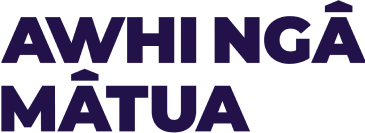Awhi is still in development, we'd love your feedback and suggestions. Let us know.
What is an IEP and how do I do one?
The IEP, the Individual Education Plan - yet another acronym to the sea of acronyms we all swim in as carers and parents of children with disabilities. What ARE they? Is an IEP a bunch of spreadsheets to measure performance or a list of boxes to tick? Is it a tool to get funding or is it a way of pigeonholing kids or labelling them as a problem? Is it an empowering tool and a story of how a student learns?
The good news and bad news is an IEP can be all of these things, even the bad ones, and more besides. Essentially an IEP is what it says on the tin. It’s a Plan to support an “Individual” with their “Education”.
From there, what’s actually IN the IEP is up to you and your child, the school staff, and any other members of your child’s care team whose input is relevant. This kind of imprecision can be a bit freaky, because you don’t know what to expect, and if that’s how you’re feeling, try reframing it as giving you a lot of freedom to tailor a plan that will truly support your child in their education.
You may also be worried that creating an IEP will come with social stigma for your child. This might be true, it’s an unfortunate fact that our society is not as accepting as it ought to be.
Firstly, no one needs to know your child has an IEP outside of their immediate team, and secondly, we urge you not to let fear of stigma get in the way of providing your child and their teachers with what can be a very useful tool.
What is an IEP?
An IEP is a written document that sets out goals for your child and a plan for how they are going to achieve them. **It does not have to be lengthy, and it does not have to be complex. **Once an IEP has been created for a student, that IEP will travel through the education system with that student and develop as their needs change.
The MoE website is full of rather idealistic statements about “writing children into the curriculum instead of out of it,” but it does actually have a good summary of what is generally in an IEP:
- who works with your child, their role and what they do
- how your child's learning is supported at home by whānau
- descriptions of particular strategies that support your child’s learning
- any resources or special equipment needed
- what success will look like for your child and their team.
Who gets an IEP?
A lot of students have learning support needs. However, not every child with such needs also requires an IEP, as their needs can be met with additional but less formal support. IEPs are created for the approximately 3% of students who require specific and targeted assistance with learning.
Generally, students who require an IEP are identified by staff at the school who kickstart the process to create one. However, if it’s something you’re curious about and you think it might be beneficial for your child, then absolutely contact the school and enquire about creating one.
Why might an IEP be useful?
IEPs can provide consistency and clarity, structure and support, for your child and for everyone involved in your child’s education. The creation of IEPs is a collaborative process, ideally empowering the student to achieve success.
They can be in whatever format works for the people they are being created for.
While they are not a medical or psychiatric document, IEPs can also be useful evidence of disability when applying for funding or other assistance; for example, a student cannot qualify for ORS funding unless they already have an IEP.
As IEPs are meant to be revisited and updated regularly, over time the IEP will create a story of your child’s education and their progress, and provide significant insight into your child’s strengths and weaknesses.
The last couple of years have been marked by significant disruption and these days it’s unfortunately common for teachers to be ill and relievers are needed to come into a classroom at short notice. They will have the best of intentions, but relief teaching is a hard job and can be a significant disruption for children who rely on routine. An IEP can quickly and succinctly provide information about your child to a relief teacher so they can incorporate any support needs into their classroom management for the day.
Who creates an IEP?
The SENCO at your child’s school will likely be in charge of coordinating the creation of an IEP. They will set up a meeting to bring everyone together to discuss the creation of the plan. People at the meeting might include classroom teachers, learning support teachers, members of the MoE learning support team, and of course the child’s whānau.
Your child can also be involved in the creation of what’s in the plan as they may have some pretty strong views on what works for them and what doesn’t, though you will probably need some time to discuss the plan without them present.
[There are templates online if you want to begin an IEP and bring it to your school.](https://www.communicationpassports.org.uk/files/cm/files/Basic_A5 Dec15(1).ppt)
Okay, it’s been created, now what?
So from here, there ought to be regular meetings between you and members of your child’s care team to discuss the IEP and how progress is being managed towards the goals that were identified. Your child should be involved in these meetings as much as they can be – they will have their own way of measuring their success at school.
An IEP can therefore also be used as an accountability tool. The plans need to be reviewed and updated regularly as your child achieves the goals that were set for them. If your child hasn’t achieved those goals, then either they weren’t the right goals in the first place and they need to be reviewed, or the support required to achieve them hasn’t been provided and you can find out why from the staff at the school.
Further reading on IEPs:
- Education.govt: Individual Plans (IPs) and Individual Education Plans (IEPs)
- Individual Education Plans Online: is for anyone involved in developing or implementing individual education plans (IEPs) to support students with special education needs.
Resources
Individual Plans (IPs) and Individual Education Plans (IEPs)
Individual Plans (IPs) and Individual...
Provides information aimed parents on Individual Education Plans...
Provides information aimed...
IEPOnline
IEPOnline
"Individual Education Plans Online – is for anyone involved in...
"Individual Education Plans...
Awhi Ngā Mātua
This article has been developed by Awhi Ngā Mātua with research support from the IHC library.
Was this resource helpful to you?


The Awhi Ngā Mātua team would like to thank Takai, the IHC Foundation and the Dines Family Charitable Trust for their generous contributions to our work. A huge thank you also to the IHC Programmes team, in particular the IHC Library which has worked so hard to make their remarkable collection available to us.








